|
 Secure Site
Secure Site
|
 |
Archive for the 'Tea Ceremony' Category
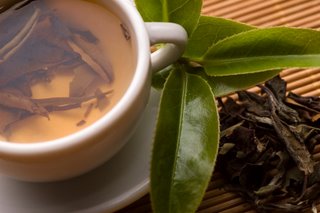 enjoy a tranquil cup of tea Tea, a beverage derived from the plant Camellia sinensis, represents a sense of ceremony, history, and tranquility to people around the world. The practice of making a good cup of tea and learning about tea’s history are gaining popularity in the United States as people recognize both the physical and mental benefits of incorporating the art of tea into their daily lives.
Historically reserved for society’s upper echelon and closely connected to religious practices, tea ceremonies have been adopted by many cultures and adapted to fit various lifestyles. Today tea is the world’s most popular beverage next to water. And although schools of thought differ on the art of tea, most agree that, at the root, a good cup of tea begins with the leaf, a deep breath, and a few moments of quiet.
“The entire event of brewing and drinking [tea] can have a beneficial effect on your health and mental well-being,” says Jane Pettigrew, author of several books on the art of tea, including The Tea Companion: A Connoisseur’s Guide (Macmillan, 1997). “Tea calms and focuses you.”
The quiet elegance of the tea ceremony—both the ritualistic and formal Japanese tea ceremony and the more social Chinese version—speaks for itself. The simplicity of the ceremony, whether performed in a traditional teahouse or at home, imparts a unique sense of serenity while it opens a door to another time and culture. A growing number of people who appreciate the history and grace that tea brings to their lives have created tea rituals of their own. “Everyone develops his or her own tradition,” says Stephanie Klausner, owner of Red Crane Teas in Denver. “Ceremony is what you make it.”
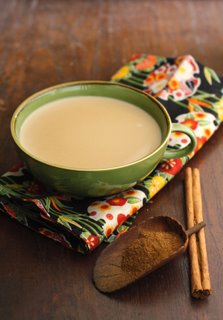 the art of tea In general, tea ceremonies provide an opportunity for the body and mind to focus on one task and release other elements of the day. “It’s a mindful process that brings us back to ourselves,” says tea instructor Donna Roberts Fellman, manager of the TeaCup in Seattle. “It’s a way to create a sacred space in our lives, to take time to stop and be mindful of the process of making a cup of tea.”
Brewing a cup of tea
There are three basic tea categories: black, green, and oolong. They’re all made from the same plant but processed differently. Black tea has been fermented (oxidized) and has a dark color and hearty flavor. Green tea skips the oxidizing and is instead steamed and parched; the flavor is more delicate, and it is light green/golden in color. Oolong, popular in China, is semi-fermented and is a cross between black and green in color and taste. Herbal teas contain no “true” tea leaves but are created from flowers, berries, peels, seeds, roots, and leaves of many different plants.
The thousands of teas available range in price from $4 to $3,000 per pound. Yet even a tea that costs $100 per pound is only fifty cents per cup, making it one of life’s more affordable luxuries. “Nobody ever thinks they like tea until they have a good cup,” says Klausner.
Steeping a pot of tea is a contemplative process that begins with the selection of tea leaves, extends to the preparation of water, and culminates in the experience of holding a warm cup, inhaling the tea aroma, and savoring the tea’s flavor. True tea drinkers discuss the process of making tea with a sense of awe; it is an art form that has been passed from one generation to the next and used as a venue for preserving family traditions. Tea aficionados pay close attention to this art of preparation, which results in a superior cup of tea and provides the mind with a respite from the day’s emotional clutter.
Although a good cup of tea requires a mere ten to fifteen minutes to make, creating that time for pause and reflection represents more than an investment in tea. “It’s a comforting indulgence, a delicacy that’s good for your head and your body,” Klausner says. “It’s what I do for myself.”
adapted from Natural Home Magazine, September/October 2002 by Heather Grimshaw
“The Zen Alarm Clock & Chime Timer‘, uses soothing acoustic chimes that signal it’s time – gently and gradually.
Rather than an artificial recorded sound played through a speaker, the Zen Clock features an alloy chime bar similar to a wind chime. When the clock’s alarm is triggered, its chime produces a long-resonating, beautiful acoustic tone reminiscent of a temple gong.
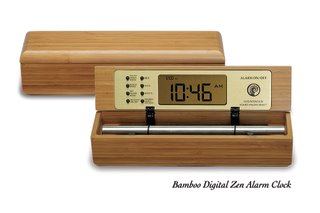 Bamboo Digital Chime Clock, a Tea Timer Now & Zen – The Zen Timer and Alarm Clock Store
1638 Pearl Street
Boulder, CO 80302
(800) 779-6383
Posted in Tea Ceremony, Zen Timers
 meditative tea ceremony Prepare for Tea During The Winter Season.
In one traditional Japanese tea ceremony, guests are met at the gate by their host and led silently through a garden to the tea room, signifying a departure from the everyday world and an entrance into a spiritual realm.
You probably don’t have a dedicated tea room, but you too can create a space in your afternoon for disconnecting from the day’s stresses, whether you’re at the office or at home. Here’s our simple step-by-step approach to creating your own personal tea ceremony.
Dedicate a Space
This can mean moving to another room, a favorite chair, or just to the other side of your desk — or simply clearing a space for tea on your table or work space. You might consider using a place mat or a tray to visually set your tea space apart from everything else.
Set the Stage
A tea ceremony is about atmosphere. Light a candle or play music to set the mood. If you’re in a busy office, just close your eyes and listen to your breath for a few minutes to switch gears and set the tone.
Select Your Tea.
Bring some intention to your choice. What are you in the mood for? A mild, grassy green? A refreshing peppermint? A rich, vibrant oolong or black tea? As Confucius said, “Let your palate be your guide.”
Use Your Favorite Accoutrements
The personal objects you use for tea making will help make this practice your own. Whether it’s a pretty mug, an iron teapot, or a favorite infuser, using something special for your tea ritual inspires a ceremonial feel.
“The Zen Alarm Clock & Chime Timer’, uses soothing acoustic chimes that signal it’s time – gently and gradually.
Rather than an artificial recorded sound played through a speaker, the Zen Clock features an alloy chime bar similar to a wind chime. When the clock’s alarm is triggered, its chime produces a long-resonating, beautiful acoustic tone reminiscent of a temple gong.
adapted from Body + Sou Magazine, 2005
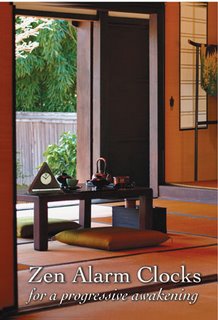 Tea Ceremonies for Relaxation, tea timers with chime by Now & Zen Now & Zen – Chime Timers and Alarm Clocks
1638 Pearl Street
Boulder, CO 80302
(800) 779-6383
Posted in intention, Meditation Timers, Tea Ceremony, Zen Timers
 Ukiyoe cup of Ginger Tea Brew a Cup of Soothing Ginger Tea:
Step 1:
Remove the skin from an inch of fresh ginger using a paring knife, vegetable peeler, or spoon. Chop the ginger and measure a table spoon per cup of tea.
Step 2:
Add ginger to a saucepan with water, 8 oz. per cup. Bring it to a boil and simmer, covered, for 20 minutes with chime clock in ‘Countdown mode’. Pour into a teapot.
Step 3:
Remove the strainer from the teapot and discard the ginger. Add honey if desired. Teas can be refrigerated for up to a day; warm to serve.
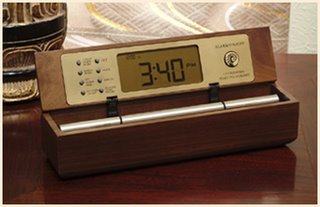 Chime clock timer for brewing Ginger Tea Recipe from Body + Soul Magazine, April 2010
Now & Zen’s Chime Timer Store
1638 Pearl Street
Boulder, Colorado 80302
(800) 779-6383
Posted in Japanese Inspired Zen Clocks, Now & Zen Alarm Clocks, Tea Ceremony, Zen Timers
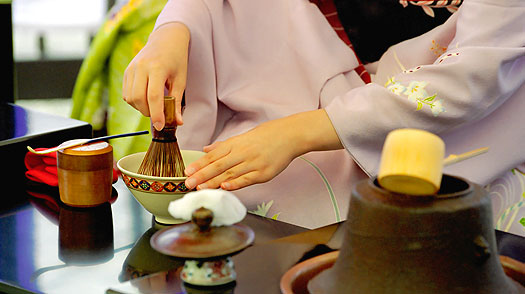 Japanese tea ceremony
Kyoto: 10 Things to Do
By ROB GOSS
Zen again, but this time in a tea cup. The cleansing of the tea utensils, the gentle bow as you receive your cup, the three clockwise turns before you take a sip: it’s not difficult to see how deeply rooted the slow and graceful movements of the tea ceremony are in Zen Buddhism. Chado or sado, as the ceremony is known, is by no means limited to Kyoto, but with the city’s rich Zen connections, it is an ideal place to experience it. Try visiting En, a small teahouse in Gion with tatami tearooms and English-speaking Kimono-clad servers. You’ll find it next to Chionin Temple, a short walk from the Chionmae bus stop on route number 206 from Kyoto Station.
1. En
272 Matsubara-cho, Higashiyama-ku, Kyoto, Japan; 81 (0)80 3782-2706 teaceremonyen.com
adapted from Time Magazine, Jan. 2012
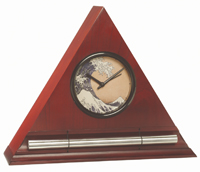 Zen Alarm Clock for a Gentle Awakening with Chime Now & Zen Headquarter Store
1638 Pearl Street
Boulder, CO 80302
(800) 779-6383
Posted in Chime Alarm Clocks, Tea Ceremony, teahouse
 utagaro One of India’s most beloved pick-me-ups, chai (spiced milk mixed with black tea) is becoming a mainstay in yoga communities around the world. Why?
By Crystal Ketterhagen
According to ayurveda, its unique mix of ingredients makes it a healthy alternative to coffee or plain tea. The cardamom and milk balance out the stimulating effects of caffeine and the ginger helps you digest the milk and sugar. On high heat bring 1 cup of water and a 1⁄2 inch piece of fresh ginger (peeled and grated) to a boil. Then add:
1 tablespoon of black tea, 1 cup of milk, and 1⁄2 tablespoon of sugar. Bring this mixture to a boil, remove the pot from the stove, and add a pinch of cardamom. Cover and let sit for several minutes. Strain and enjoy.
Prep Tip: Speed up the process with two pots. Boil the milk and sugar in one pot, and the water, ginger, and black tea in another. Then combine and add the cardamom. (Don’t boil the ginger with the milk—that will cause your chai to curdle.)
Variations: For more exotic flavor, add a pinch of saffron with the sugar and a dash of rosewater with the cardamom, or a pinch each of cloves, cinnamon, and nutmeg with the ginger, or a dash of vanilla extract with the cardamom. For caffeine-free chai, substitute dandelion root, peppermint leaves, or lemon grass for black tea.
Crystal Ketterhagen is the former managing editor for Yoga International.
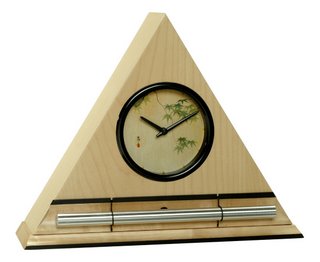 Zen Chime Alarm Clocks Now & Zen
1638 Pearl St.
Boulder, CO 80302
(800) 779-6383
Posted in Tea Ceremony
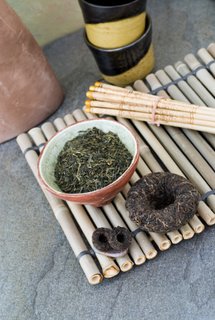 making medicinal teas Body+Soul, June 2008
Medicinal teas are easy, natural ways to help relieve numerous ailments such as PMS, hot flashes, mood-swings, and fatigue. Here is how to brew your next batch.
For dried herbs and supplies, try Jean’s Greens or Mountain Rose Herbs.
Single Ingredient Teas
Leaves And Flowers
Pour a quart of boiling water over 4 tablespoons of the herb, cover and steep for 20 minutes, and strain.
Roots, Berries, Or Bark
Simmer 4 tablespoons for 20 minutes, then strain.
Tea Blends
For teas that call for multiple ingredients, you’ll save time by making a large batch of dried herbs.
To make a blend, follow the ratio in the recipe, using 1 ounce of dried herb per “part”; for example, if a formula calls for one part each of nettle and oat tops and 1.4 part peppermint, combine 1 ounce each of the first two ingredients with 1.4 ounce of the last. Mix well, and store your blend in an airtight glass container.
To make a quart of tea, a good daily dose for many conditions, pour boiling water over 4 tablespoons of the mixture in a quart-sized heat-proof jar (such as a Mason jar). Cover and steep for at least 20 minutes. Strain the herbs out. Will keep refrigerated for two to three days.
Tea Recipes for Women’s Health
PMS Relieving Nettle Tea
Pour a quart of boiling water over 4 tablespoons dried nettles (plus a tablespoon of spearmint or peppermint for flavor); steep for at least 20 minutes, and strain. Drink 2 cups or more daily.
Cramp-Relief Tea
Add 5 to 6 tablespoons of fresh or dried ginger to 1 quart of water; cover and simmer for 10 minutes. Add honey and lemon to flavor. Sip hot throughout the day.
Pregnancy-Prep Tea Blend
Combine 1 part each of dried tea nettle leaf, raspberry leaf, lady’s mantle, and cut-and sifted ginger. Drink 3 to 4 cups daily.
A Fatigue Fixing Tea Blend
Mix equal parts nettle, raspberry leaf, oat tops, and lemon balm with 1/4 part each of cut-and sifted licorice and ginger. Drink 3 cups daily.
Hot Flash Cooling Tea Blend
Combine equal parts sage, blue vervain, and motherwort with 1/2 part peppermint or spearmint for flavor. Drink throughout the day as needed.
Happiness Tea Blend
Combine equal parts hawthorn (berries, leaf, and flowers), lemon balm, St. John’s wort, blue vervain, and oat tops. Drink 3 to 4 cups daily.
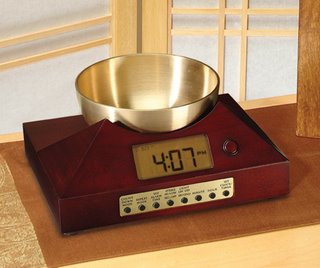 timer with gong Now & Zen, Inc.
1638 Pearl St.
Boulder, CO 80302
(800) 779-6383
Posted in Tea Ceremony, Well-being
 tea for coughs
Sizing up 25 studies on over-the-counter cough medicine, a recent research review published in “The Cochrane Library” determined that there’s no good evidence for or against the effectiveness of formulas such as Robitussin and Mucinex.
For natural, reliable cough relief, try a tea recipe recommended by Tieraona Low Dog, M.D., director of education at the University of Arizona’s Program in Integrative Medicine. It features thyme, which alleviates chest congestion and supports respiratory function, along with throat-soothing honey, sage, and vitamin-C-rich lemon.
Cough-Control Tea
1. Pour hot water over 2 teaspoons organic lemon rinds, 1 teaspoon sage, and 1/2 teaspoon thyme. (Dried or fresh herbs can be used.)
2. Cover and steep for 15 minutes. Use your Digital Zen Timer.
3. Strain tea, then add juice of 1/2 lemon and 1 tablespoon honey.
4. Drink two to three cups daily for cough relief.
adapted from Body and Soul Magazine
 tea timers with chime Now & Zen, Inc.
1638 Pearl St.
Boulder, CO 80302
(800) 779-6383
Posted in Tea Ceremony
 tea and yoga Enjoyed for centuries as a healthy drink, tea also has merits as a postyoga refreshment with the ability to foster community and dialogue among students—while soothing the senses, too.
By Angela Pirisi
When students are roused from their final relaxation after a yoga session and you see them emerge glowing and peaceful from the stillness of their mat, the last thing you want to do is turn them out into the noise, chaos, and stress of the world outside the studio. It’s too jolting a contrast, and students often need some time to digest their yogic experience and slowly transition back to their daily lives. That’s why, for many yoga studios, the bridge between yoga and the high-intensity pace outside is a warm cup of tea.
Serving Health and History
Many studios serve tea, usually after class, as a way to offer students an opportunity to bask in the buzz of yoga. “People’s hearts are really opened after yoga, and tea offers a perfect segue back into their reality,” says Elissa Kerhulas, a Kundalini teacher and owner of Yoga Brew in Hollywood, California. Tea is an informal yoga tradition that has taken root over the years, and growing knowledge about the various health benefits of tea have made it a welcome addition to yoga classes as one more way to embrace healthy living. While it’s not a ritualized process per se, the tradition of combining tea and yoga has an ancient connection.
“Yoga and Ayurvedic medicine go hand in hand,” says Kerhulas, who offers tea (and/or soup) as part of her home-catered yoga classes. She remembers her Kundalini teachers talking about tea all the time. For example, “yogi tea,” a home-brewed spice tea, includes traditional Ayurvedicspices, such cloves, black pepper, cinnamon, cardamom, and ginger, in a black tea base, sweetened with milk and honey. The recipe was inspired in the 1960s by Yogi Bhajan, who served the tea to students. Many teachers, though, have stepped away from this traditional recipe and are serving up drinks that range from green tea to roasted barley to custom herbal blends.
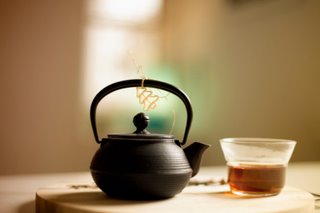 yoga and tea Kerhulas was brewing her own custom blends when she started her business six years ago, but she then started consulting a master herbalist who now intuitively assesses the best brew for each of her classes. “The kind of tea I serve depends on the people in a class, as well as the time of day,” Kerhulas explains. “For morning classes, I might start with something such as chai, ginger, or yogi tea because of their invigorating and stimulating properties. For evening classes, I would more likely choose something calming or grounding, such as jasmine, lavender, wood betony (mint family), licorice, or chamomile.” Her one-of-a-kind tea blends often combine several herbs.
Melanie Smith, an Anusara yoga teacher and owner of Yogaphoria in New Hope, Pennsylvania, offers students custom-blended teas made just for her studio, including black, green, and Rooibos teas. “Serving tea arose from the desire to serve something healthy and nurturing,” she says. On a more personal level, though, adds Smith, “I’m a big fan of tea and what it can do for the body—its healing properties and antioxidants.”
Opening Hearts and Minds
Besides soothing and healing properties, the main thrust behind a postyoga cup of tea is about the social bonding and unity it creates among students. “It’s very much about community, a chance to get to know each other, as well as a chance to be part of that energy and keep that energy, too,” says Smith. Her studio includes a space created specifically for tea, the Tea Lounge. She describes it as a place where students can study, do their work, and process what they’ve learned in classes or teacher training.
Other teachers agree that tea can help facilitate learning and discussion. Jennifer Durand, who teaches hatha yoga at the Healing Yoga Foundation in San Francisco, leads the Ladies’ Tea and Yoga Society, where students convene after her hour-long class for tea and philosophical discussion, either in the studio, which is an old greenhouse, or in the garden. Durand describes these gatherings as significantly more social than, say, a Japanese tea ceremony. “When everyone has settled, I either introduce a topic of discussion (anything from a Yoga Sutra to how we can eat more healthfully) or I let the conversation unfold on its own. Increasingly, I’ve been choosing the latter, as it seems to me that the women are enjoying the chance to connect in their own way,” says Durand.
 tea “The way the Society came about was that, of course, hatha yoga gets you only so far—it gives you a certain discipline, to be sure, and it can create a stronger, healthier body,” explains Durand. “But one must take it that extra distance for the practice to be truly transformative; one has to delve into the philosophical side of things. I find the best way to introduce the Sutra is through the gentle approach of sneaking it in with tea and treats.”
Whether used for its mystical or medicinal properties, tea has become an integral part of yoga, and students seem to have no trouble warming up to the experience.
Tips for Serving Tea
While there is no rule book for serving tea with yoga, there are some ways to enrich the experience by setting the right mood.
Invite all of the senses. Kerhulas stresses maintaining a clean, uncluttered space; adding beautiful objects (flowers, artwork); serving tea in a porcelain or wooden cup; playing light, meditative music; and using incense, such as sandalwood (which is very grounding). “Basically, it needs to feel as if you are entering a special zone that’s separate from the stresses of everyday life,” she says.
Serve only the finest tea. “Make sure to use good, loose-leaf tea to enhance the whole experience—it’s more healing and beneficial,” says Smith. On a practical note, Smith advises that if you want to use fine china, you have to clear it with the local health department. In fact, Smith says she has a restaurant license just to brew and serve tea. Using any nondisposable dishes or cutlery would require having a dishwasher and a three-basin sink. In Pennsylvania, where she is, you’re regulated as soon as you serve anything—the law could vary across the states.
Make it comfortable. It’s about creating a space where students feel welcome, loved, and nurtured, says Smith. That’s why she chose to place a large, L-shaped, lavender sofa in her Tea Lounge, custom-designed to be extra deep so students could easily sit on it in the Lotus position. Both the sofa and room are decorated with soothing, soft shades, such as sage, turmeric, and saffron.
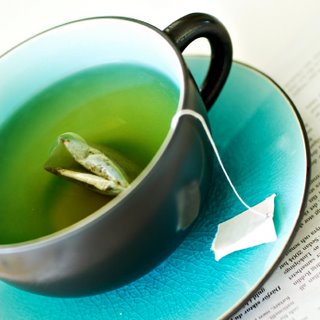 tea Pair it up with healthy food. Kerhulas serves homemade vegetarian or vegan soups (such as black bean, curried butternut squash, or potato leek). Smith says the Tea Lounge sells only green, raw, or organic snack bars and fruit—”things that enhance health, nothing processed.”
The guidelines vary by state, and maybe even by city or town, but Smith suggests that once you’re preparing and serving food or drink, you’re starting a relationship with the health department. And if you aren’t following the local laws and you’re found out, you can be reprimanded, fined, or even shut down. The best policy is transparency. Call your local health department; tell them exactly what you’re planning to do, serve, and sell; and then fill out the proper paperwork. Your best bet is to follow all relevant laws.
Angela Pirisi is a freelance health writer who has covered holistic health, fitness, nutrition, and herbal remedies. Her work has appeared in Yoga Journal as well as inNatural Health, Fitness, Cooking Light, Let’s Live, and Better Nutrition.
 bowl gong timers for tea, yoga and meditation Now & Zen, Inc.
1638 Pearl St.
Boulder, CO 80302
(800) 779-6383
adapted from Yoga Journal.com
Posted in Tea Ceremony, teahouse
 tatami-floored tea room for tea ceremony ...the art of ‘way of tea’ inspired by Japan…
By the 16th century, tea drinking had spread to all levels of society in Japan.
Almost any place where implements for the making and serving of the tea can be set out, and where the host can make the tea in the presence of the seated guest(s), can be used as a venue for tea.
A tatami-floored room with adjacent mizuya space for the host to conduct preparations of the various items to be used is required for a full chaji.
Many schools of Japanese tea ceremony have evolved through the long history of chadō and are active today.
from wikipedia.org
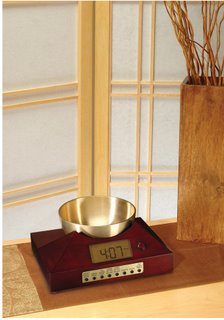 Zen Timepiece, a chime alarm clock and timer in cherry finish Now & Zen Headquarters
1638 Pearl Street
Boulder, CO 80302
(800) 779-6383
Posted in Chime Alarm Clocks, Japanese Inspired Zen Clocks, Meditation Tools, Natural Awakening, Now & Zen Alarm Clocks, Tea Ceremony, wabi-sabi, Zen Timepiece by Now & Zen, Zen Timers
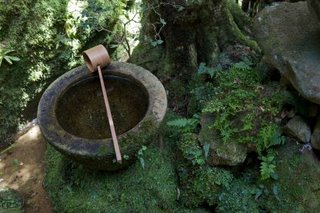 wabi-sabi tea ceremony The tea ceremony in Japan developed as a “transformative practice”, and began to evolve its own aesthetic, in particular that of wabi. Wabi, meaning quiet or sober refinement, or subdued taste, “is characterized by humility, restraint, simplicity, naturalism, profundity, imperfection, and asymmetry [emphasizing] simple, unadorned objects and architectural space, and [celebrating] the mellow beauty that time and care impart to materials.” (see now & zen blogs on wabi-sabi, March 2010.)
wikipedia.org
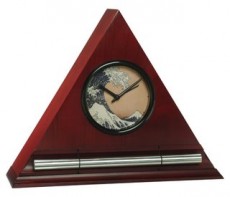 Zen Alarm Clock, Ukiyo-e Hokusai Wave Dial Face Now & Zen
1638 Pearl Street
Boulder, CO 80302
(800) 779-6383
Posted in Japanese Inspired Zen Clocks, Tea Ceremony, Zen Timers
« Previous Entries
Next Page »
|
|
|
|